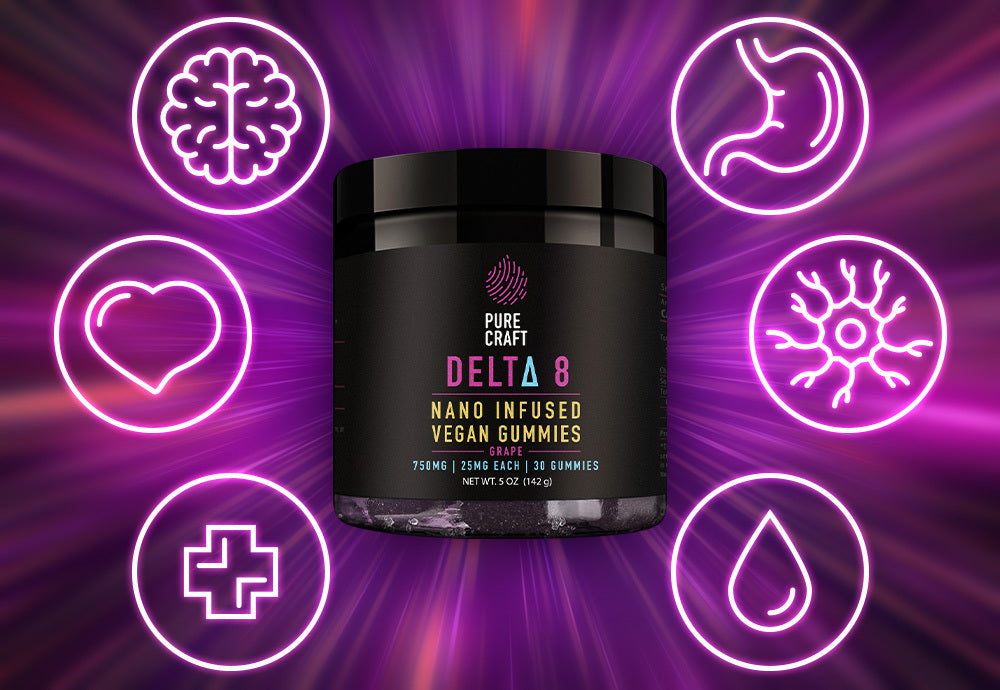Your Cart is Empty
FREE SHIPPING ON ORDERS $70+ | SATISFACTION GUARANTEED
You know there are countless CBD products on the market. They come in scores of formulations that can be consumed in oh-so-numerous ways. You may even have some favorites….
But, are you familiar with intranasal CBD? Like, what the heck is it and do you take it how you’re imagining it sounds like you would?
Before you wrinkle your nose at it and say, “Uh, I’m all set. I’ll just stick with my usualCBD tinctures andgummies TYVM.” — let’s rout around in this for a bit.

So, what is intranasal administration? The wordintranasal simply means inside or by way of the nose.
So, put a bean up your nostril and you’ve got an intranasal legume. Just kidding — absolutely don’t stick stuff up your nose that’s not supposed to go there! Just trying to give a colorful example you’ll remember….
Anyway, intranasal administration is intended to get the substance on or through the tissues in your nose and pharynx (the cavity behind the nose and mouth that connecting to the esophagus) area. In many ways, intranasal delivery is like sublingual administration.
“Intranasal” —in relation to taking a medication, supplement, or other substance — can be done in a few different ways.
Some types of nasal drug delivery systems include:
It’s important to make this distinction because it’s quite impactful. Unlike intranasal administration, inhalation is designed to deliver substances into your respiratory system.
But it’s possible that some substances are both an inhaled and intranasally introduced — i.e., it enters the body via the lungsand the lining of the nose.
This is akin to how aCBD tincture taken sublingually is also, to some degree, an orally-administered product. Most of the dose is absorbed through the membranes under the tongue, but some portion of the dose is inevitably swallowed.
Need some examples to cement this n your mind? How about these:(1)
As you can see — it runs the gamut from sedatives to analgesics to decongestants and beyond.
Intranasal administration can be an enormously effective means of getting a substance into the body.
Compared to other delivery methods, intranasally-consumed substances can:(2,3)
There are lots of reasons why intranasal administration may be an optimal technique. But, there are still some possible drawbacks or shortcomings, like:(2,3)
Switching gears a little. Let’s talk about intranasal andCBD specifically.
Our blog has discussed at length the many merits of CBD for health and wellness: reduces pain and inflammation, eases anxiety, and so on. And these continue to be drivers for the folks who want to consume their CBD intranasally.
Similarly, intranasal CBD has pretty much the same features, upsides, and downsides as other substances that’re taken intranasally.(4)
You can find intranasal CBD products aimed at helping with conditions such as:
Most of these products are nasal sprays. But, depending upon the purpose and desired outcome, you might be able to usegood ol’ CBD oil applied topically to the insides of your nose.
And, if you’re a really enterprising DIYer, you can even find details on how to make CBD nasal sprays online.
Sometimes, picking your nose is your best option! When it comes to taking your medicine or other substances — like CBD.
Intranasal administration is when a substance is taken via the nose with the intent of delivering that substance to the nasal cavity and surrounding areas. This way of consuming a substance has many benefits: better and quicker absorption, ease, targeted relief, and more.
While not as common as other preparations of CBD, intranasal CBD is available. It’s mostly in the form of nasal sprays (but you may also be able to apply CBD oil topically intranasally, too). Intranasal CBD may be an effective way to address allergies, pian, stress, and other complaints and conditions.
References

The cannabis compound CBD has been popping up in Parkinson’s disease (PD) therapy and prevention conversations, propelled by success stories from p...
Read More
CBD is one of the most popular supplements on the market today. But you're a savvy consumer. You know just because something is popular doesn’t mea...
Read More
You know delta-8 as "weed-lite" or the "chillest of the cannabinoids." But what about all the potential health benefits of this unique compound? Wh...
Read More